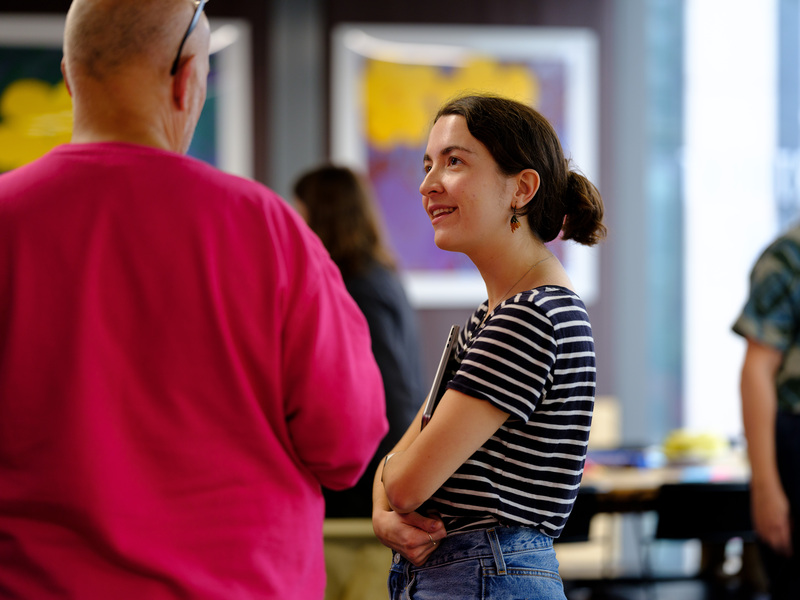Understanding how young people engage with generative AI

We need to create something unique that reflects the voices and needs of young people
We’re currently researching and designing a solution to help 15 – 17 year olds understand, examine and use generative AI in positive ways. We began this 4 month project in November and this is a first update on how we’ve approached the work so far.
The National Citizen Service (NCS) and Centre for the Acceleration of Social Technology (CAST) asked dxw family-member Neontribe to carry out the project which focuses on enrichment activities and programs outside of the standard education curriculum.
We’re collaborating with youth organisations Beats Bus, The Politics Project and Warrington Youth Zone, who are sharing their expertise with us while also learning about the digital design process.
The project so far
We started off by holding a series of workshops to:
- understand how we would approach the project
- gather existing knowledge
- identify research questions and assumptions
Rather than starting from scratch, we built on what’s already been researched. This included looking at the valuable work that’s been done by organisations like Unicef, the National Literacy Trust, and Coded Companions.
Next, we recruited a group of young people to be part of the process. We wanted them to co-create the solution with us, ensuring their voices shaped the final product.
While recruiting young people for research can often be tricky, we were fortunate to have fantastic support from our youth organisation partners. They helped us connect with a diverse group of young people, all eager to take part. With their help, we conducted 12 one-on-one user research interviews.
What young people told us
Through our interviews, we learned a lot about how young people are engaging with generative AI.
They are using it for learning, creative projects and even emotional support. They appreciate how generative AI can save time, simplify complex information, and promote inclusivity. They are also cautious of some, but not all, of the risks. This includes misinformation, intellectual property theft, and over-reliance eroding critical thinking skills.
Social media plays a significant role in their interaction with generative AI. Here they encounter deep fakes, inappropriate content, and AI influencers promoting unrealistic standards. Despite efforts to discern real from fake, advancing technology makes this harder.
Looking ahead, many are exploring how generative AI might shape their careers, including new or changing job opportunities and using AI tools for career advice and preparation. As they navigate a changing career landscape, fostering digital literacy and ethical awareness of AI will be crucial.
Key reflections so far: challenges and learning
Learning about design methods: getting comfortable with being uncomfortable
We often follow the UK Design Council’s Double Diamond framework for digital projects. This means instead of starting with a preconceived solution, we begin with research to guide our approach. This process was new to our youth organisations and initially posed a challenge.
“I like to know the outcome of where we’re going to be. But with this particular project, there isn’t an outcome yet, because we’re going through the research process. It’s a completely new way of working for me, and I know a couple of the other team as well found it challenging at the start.”
Dave Ditchfield, Warrington Youth Zone
This way of working also often reveals that our assumptions aren’t always correct. For example, we discovered that young people use far fewer AI tools than expected.
“I was quite surprised, having used AI for a long time. There’s hundreds that have come out in the last couple of months, but there were only 7 or 8 being used [by young people].”
Dave Ditchfield, Warrington Youth Zone
Creating a solution around generative AI could be tricky
Designing a meaningful solution for young people to engage with generative AI comes with its own unique challenges.
Setting expectations for what is possible in the time we have
With just 4 months to explore, research, and prototype, time is one of our biggest constraints. Generative AI is a vast and rapidly evolving field, so it’s important to narrow our focus. This requires balancing ambition with feasibility. We will need to choose ideas that are impactful, yet realistic within the time and resources available.
Making sure we don’t create what already exists
We need to ensure that our solution adds real value. There’s already a wealth of information and tools available. Rather than duplicating existing ideas we need to create something unique that reflects the voices and needs of young people.
Creating a sustainable solution
One of our main priorities is making sure that whatever we create can thrive beyond the project. This means exploring funding opportunities to continue development, but also designing a solution that doesn’t rely on ongoing funding or specialist resources to maintain.
We’re thinking carefully about how to make it easy for others, like our youth organisations, to take ownership of the solution. This might mean:
- creating simple, reusable materials
- leveraging free or open-access tools
- designing something that requires minimal technical expertise to manage
What’s next?
In our next update we’ll share:
- how we worked with young people to brainstorm ideas
- what ideas we prototyped
- what we found when we tested our ideas with young people